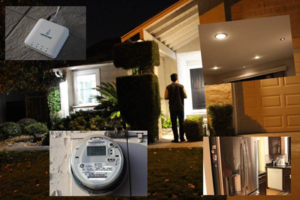Analysis: Residential Energy Consumption Patterns and Expenditures in the United States

The “Residential Energy Consumption Survey” (RECS) conducted by the U.S. Energy Information Administration (EIA) reveals that space heating remains the largest consumer of energy in American homes. Accounting for 42% of residential energy consumption, heating costs averaged $519 per household in recent years.
Climate conditions and the choice of energy sources influenced regional variations in energy usage and expenses. This comprehensive survey allows for a comparative analysis of household energy consumption across all 50 states and the District of Columbia, shedding light on energy consumption patterns at a national level.
Regional Disparities in Space Heating Expenditures
 New Hampshire, known for its cold climate, had households spending an average of $981 on space heating, reflecting the high demand for warmth. Fuel oil emerged as the most commonly used primary heating fuel in New Hampshire, accounting for 40% of households.
New Hampshire, known for its cold climate, had households spending an average of $981 on space heating, reflecting the high demand for warmth. Fuel oil emerged as the most commonly used primary heating fuel in New Hampshire, accounting for 40% of households.
In contrast, Louisiana, one of the warmest states, reported significantly lower average heating expenditures at $244. Electricity, constituting 62% of the primary heating source in Louisiana, played a dominant role in maintaining comfortable indoor temperatures.
Insights from Previous RECS Results
The Midwest region primarily relied on natural gas for space heating, with 70% of households utilizing it as their primary fuel source. However, natural gas consumption varied among states within the region.
For instance, households in Michigan exhibited higher natural gas usage for space heating, averaging 72.7 million British thermal units (MMBtu) in 2020, while households in Kansas consumed an average of 50.9 MMBtu during the same period.
Households relying on fuel oil or kerosene as their primary heating fuel incurred higher costs with average space heating expenses reaching $1,164. In comparison, households using propane ($1,010), natural gas ($519), or electricity ($396) as their primary fuel source spent less on space heating. The increased expenditure for fuel oil or kerosene can be attributed to their prevalent usage in colder climates where heating demands are higher.
Variations in Air Conditioning and Lighting
Air conditioning accounted for 9% of total site energy consumption across U.S. households, but the percentage varied significantly across states. For instance, air conditioning constituted 28% of total site energy usage in Florida but only 2% in Maine, reflecting the contrasting climate conditions.
Lighting expenses experienced a decrease, with households spending an average of $91 in 2020, compared to $147 in the 2015 RECS. Electricity consumption for lighting also decreased, averaging 654 kilowatt hours (kWh) in 2020, down from 1,105 kWh in 2015. Notably, the adoption of energy-efficient LED light bulbs increased significantly, with 47% of households reporting their usage for indoor lighting in 2020, compared to a mere 4% in 2015.
Refrigeration Patterns and Electricity Usage
Household size impacted refrigeration expenditures, with single-member households spending an average of $96, while households with four members spent $128. Additionally, 44% of four-member households reported having two or more refrigerators, compared to only 16% of single-member households.
Electricity consumption for refrigeration varied by state, with households in Washington, D.C. consuming an average of 610 kWh annually, while Georgia households consumed 928 kWh. Georgia households also reported a higher prevalence of second refrigerators, with 37% having multiple units, compared to just 15% in Washington, D.C.













